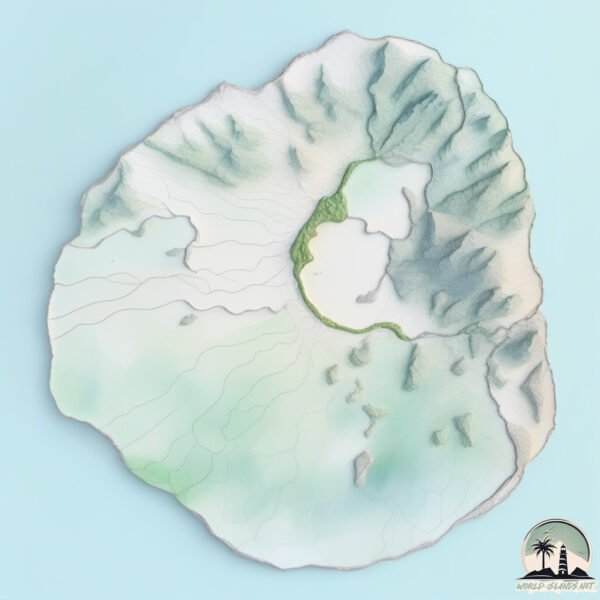Welcome to Fogo , a Dry island in the North Atlantic Ocean, part of the majestic Atlantic Ocean. This guide offers a comprehensive overview of what makes Fogo unique – from its geography and climate to its population, infrastructure, and beyond. Dive into the details:
Geography and size of Fogo
Size: 470.4 km²Coastline: 93.8 kmOcean: Atlantic OceanSea: North Atlantic OceanContinent: Africa
Fogo is a Large Island spanning 470 km² with a coastline of 94 km.
Archipel: Cape Verde – An island country in the central Atlantic Ocean, known for its Creole Portuguese-African culture, music, and volcanic landscapes.
Tectonic Plate: Africa – One of the world’s largest tectonic plates, covering the African continent and parts of the surrounding oceans, known for its stability with some active rift zones.
The geographic heart of the island is pinpointed at these coordinates:
Climate and weather of Fogo
Climate Zone: DryClimate Details: Hot Deserts ClimateTemperature: Hot
Climate Characteristics: Dominated by extremely hot temperatures, this climate is marked by minimal rainfall and barren landscapes. Nights often experience drastic temperature drops.
Topography and nature of Fogo
Timezone: UTC-01:00Timezone places: Atlantic/Cape_VerdeMax. Elevation: 2829 m Pico de FogoMean Elevation: 863 mVegetation: Herbaceous CoverTree Coverage: 7%
The mean elevation is 863 m. Dominating the island’s landscape, the majestic “Pico de Fogo” rises as the highest peak, soaring to impressive heights. The island is characterized by Mountains: High, steeply elevated landforms. Characterized by both a high maximum elevation (over 500 meters) and a high mean elevation, creating rugged, mountainous terrains on islands.
Dominating Vegetation: Herbaceous Cover
Vegetation: 10 vegetation zones – Very Highly Diverse Island
Infrastructure and Travelling to Fogo
Does the island have a public airport? yes .
Does the island have a major port? no .
The mean population of Fogo is 81 per km². Fogo is Gently Populated. The island belongs to Cabo Verde .
The name of the island resonates across different cultures and languages. Here is how it is known around the world: Arabic: فوغو; German: Fogo; Spanish: Fogo; French: Fogo; Portuguese: Ilha do Fogo; Russian: Фогу; Chinese: 福古岛
Continuing your journey, Ilha Brava is the next notable island, situated merely km away.
Fogo Island: A far away comeback story
A small island off the coast of Newfoundland is redefining itself with the help of a local businesswoman who combined deep ...
Fogo Island: A far away comeback story
A small island off the coast of Newfoundland is redefining itself with ...
A small island off the coast of Newfoundland is redefining itself with the help of a local businesswoman who combined deep ...
National Geographic Unique Lodges of the World: Fogo Island Inn
A stay at Fogo Island Inn is an invitation to experience a ...
A stay at Fogo Island Inn is an invitation to experience a centuries-old island culture, from its fishing and foraging traditions to its ...
FOGO ISLAND Newfoundland: The Fogo Island Inn and Exploring the Island
I travelled to Fogo Island and stayed at the Fogo Island Inn, ...
I travelled to Fogo Island and stayed at the Fogo Island Inn, Newfoundland. What an incredible place! This should be at the top of ...
Cabo Verde is classified as Developing region: Regions characterized by lower income levels, with economies in the process of industrialization and modernization. The level of income is Lower middle income.
News – Latest Updates and Headlines from Fogo
Stay informed with the most recent news and important headlines from Fogo. Here’s a roundup of the latest developments.
Loading...
Please note: The data used here has been primarily extracted from satellite readings. Deviations from exact values may occur, particularly regarding the height of elevations and population density. Land area and coastline measurements refer to average values at mean high tide.

